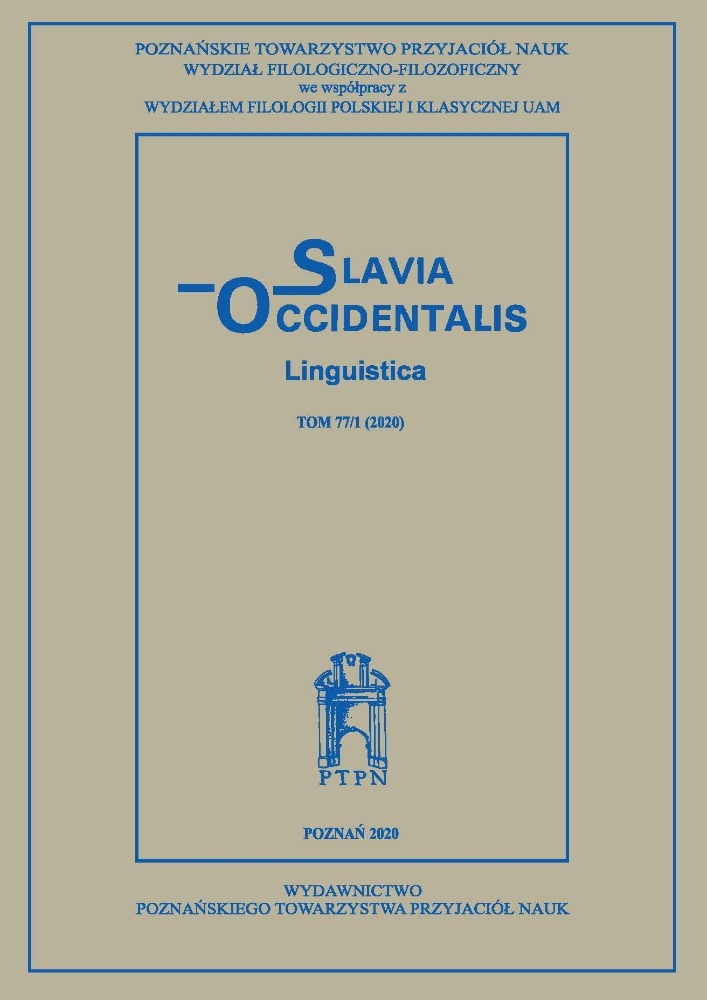Abstrakt
This article is the second and the last part of a series dedicated to the characteristics of a description of Christ’s seven words uttered on the cross as accounted in Old Polish biblical and apocryphal narrations. In part one, I focus on the origin of the words, the characteristics of Old Polish texts containing them. I highlight the most important differences in the narration of the specific fragments of Old Polish Passions of Jesus. Part two is entirely dedicated to the language of the fragments of Old Polish texts on Christ’s seven words uttered on the cross (ŻPJK, SCh and RD). First, I present the enumeration schemes in each apocrypha. They are strictly related to the tradition of religious instruction and teaching and are an attempt at sorting out the material. The article presents also the various ways in which Christ’s specific words are called. The regular word-forming structure of the modifiers affects the rhythmic form of the specific fragments of texts. Finally, I show how quotations from Christ were introduced into each apocrypha: how the utterances’ modal frame was shaped and what verbs of speech were used. It turns out that in each historic text, Christ’s words were treated differently: in the SCh, they were described most extensively and in the RD – least extensively but it is the RD where the enumerations are most precise with respect to the syntax, perhaps because the specific parts are at the smallest distance from each other. Christ’s seven words on the cross are least structured in the ŻPJK.
Bibliografia
RD – Górski K., Kuraszkiewicz W., (wyd.), 1965, Rozmyślania dominikańskie, t. 1, Wrocław–Warszawa–Kraków.
RP – Twardzik W., Keller F., (wyd.), 1998, 2000, 2004, Rozmyślanie przemyskie. Transliteracja, transkrypcja, podstawa łacińska, niemiecki przekład, t. 1-3, Weiher–Freiburg i. Br.
SCh – Vrtel-Wierczyński S., (wyd.), 1933, Sprawa Chędoga o Męce Pana Chrystusowej, Poznań.
ŻPJK – Wydra W., Wójcik R., (wyd.), 2014, Żywot Pana Jezu Krysta Baltazara Opeca, Poznań.
Brückner A., 1904, Apokryfy średniowieczne II, Kraków.
Goliński J.K., 2002, Peccata capitalia. Pisarze staropolscy o naturze ludzkiej i grzechu, Bydgoszcz.
Górny W., 1966, Składnia przytoczenia w języku polskim, Warszawa.
Krążyńska Z., Mika T., Słoboda A., 2015, Składnia średniowiecznej polszczyzny. Część I: Kontekst – metody – tendencje, Poznań.
Mazurkiewicz R., Stępień P., 2007, Źródła i konteksty „Kazania praskiego” (rekonesans), w: Amoenitate vel lepores philologiae, red. R. Laskowski, R. Mazurkiewicz, Kraków, s. 202-221.
Mika T., 2009, Domniemany przełom. Kilka myśli na temat odrębności stylu i składni „Kazań świętokrzyskich”, w: Średniowieczna wizja świata. Jedność czy różność (idee i teksty), red. T. Wolińska, M.J. Leszka, Łódź, s. 59-80.
Mika T., Słoboda A., 2015, Wyrażenia funkcyjne w średniowiecznej polszczyźnie z perspektywy składniowej. Wybrane problemy badawcze, Katowice.
Olson D.R., 2010, Papierowy świat. Pojęciowe i poznawcze implikacje pisania i czytania, tłum. M. Rakoczy, Warszawa.
Pisarkowa K., 1978, Historia składni języka polskiego, Wrocław.
Rojszczak-Robińska D., 2016, Staropolskie pasje: Rozmyślanie przemyskie, Sprawa chędoga, Karta Rogawskiego. Źródła – język – fabuła, Poznań.
Słoboda A., 2012, Liczebnik w grupie nominalnej średniowiecznej polszczyzny. Semantyka i składnia, Poznań.
Ziółkowska O., 2016, Specyfika języka „Rozmyślań dominikańskich” w świetle składni i leksyki, Poznań.

